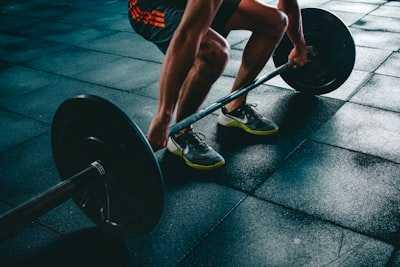Everything You Need to Know About Sets, Reps & Rest Periods
Curated from: Mind Pump: Raw Fitness Truth
9
Explore the World's Best Ideas
Join today and uncover 100+ curated journeys from 50+ topics. Unlock access to our mobile app with extensive features.
Podcast: Key Takeaways
- If you’re not seeing progress, the best program is the one you’re not doing! Example: if you usually train low weights and high reps, start training with heavy weights and fewer reps
- A guaranteed way to break through the training plateau: Don’t change your routine – just manipulate reps and rest period
- For any program, stay consistent for 3-6 weeks then manipulate sets, reps, tempo, rest to trigger new adaptation
- Train each body part 9-18 sets per week and keep sets between 1-30 reps depending on the goal
- Don’t shortchange rest periods! Rest is as important as reps and sets
9
116 reads
Exercise Versus Training
- Programming is what will make or break your progress
- A lot of programs are just a bunch of exercises and aren’t designed for a specific outcome like training
- Training programs are designed to build strength, make you faster, lose body fat, etc.
- Exercise programs designed for the general population are just exercises to get you moving and people will see results short term because some movement is always better than no movement at all
9
92 reads
Defining A Set
A set is a specified period of time you’re doing an exercise
- Defining sets helps you define reps, rounds, volume
- Multiple sets will lead to greater improvement compared to a single set
Sweet spot: 9-18 sets per body part, per week
- There’s an upper limit of what you can tolerate – and a sweet spot of what will give you the best results – maybe you can do 18 sets but 14 will give you great results
- The goal is the do as few sets as you can get away with to elicit results
11
78 reads
Two Approaches To Try
The fitness level and genetic potential of an individual plays a role in the number of sets needed
Two approaches to try:
- Fewer sets with more exercises
- More sets with fewer exercises
It’s important to practice lifts and improve movements
Stay consistent with the set range for 3-4 weeks, assess progress, then try another route
9
77 reads
A Superset And A Drop Set
Superset: two exercises together with no rest
- Supersets can be the same body part or opposing body part
- Supersets work particularly well when cutting calories and will use lighter weights
Drop set: finish a set at a particular weight then drop weight and hit the next set with no rest
9
81 reads
The Rep
Rep: one full completion of an exercise
- Reps get the muscle to move with resistance and send muscle-building stimulus
- For strength building, stay between 1-30 reps – anything higher becomes more cardio like
- Working with higher reps elicits a different response from the body than lower reps
Higher reps: weight is lighter, controlling breathing, squeezing at the top,
Lower reps: weight is much heavier, bracing, holding breath, driving with CNS
- All rep ranges build muscle and burn calories
- Vary rep ranges every 3-4 weeks to keep body adapting and changing
9
64 reads
The Tempo
- Your body gets used to working at a certain tempo but it’s important to manipulate
- Tempo plays a huge factor with reps: when lifting heavy it’s faster, move explosive tempo; when going for a pump it’s slower, more controlled
- Each variable of tempo can be manipulated depending on your goal
- Get the mechanics of the movement then alter the tempo and have fun with it
- Adjust the weights according to the tempo you are working with
9
61 reads
The Importance Of Rest
Without rest, the body uses energy that encourages endurance and stamina instead of muscle and you’re basically doing cardio with weights
- Resting allows the body to replenish energy – the body needs to go through a specific energy change
- Rest should be 30 seconds – 3 minutes depending on the goal
- Same rules apply: change up lengths of rest periods
- Active rest: stretch between sets if you absolutely can’t sit still
- A guaranteed way to break through training plateau – Don’t change your routine – just manipulate reps and rest period
10
63 reads
IDEAS CURATED BY
Crystal Beasley's ideas are part of this journey:
Learn more about exerciseandfitness with this collection
The importance of networking in podcasting
How to grow your podcast audience
How to monetize your podcast
Related collections
Similar ideas
9 ideas
The Best Upper Body Workout Routine And Exercises
aworkoutroutine.com
1 idea
The Best Upper Body Workout Routine And Exercises
aworkoutroutine.com
3 ideas
Read & Learn
20x Faster
without
deepstash
with
deepstash
with
deepstash
Personalized microlearning
—
100+ Learning Journeys
—
Access to 200,000+ ideas
—
Access to the mobile app
—
Unlimited idea saving
—
—
Unlimited history
—
—
Unlimited listening to ideas
—
—
Downloading & offline access
—
—
Supercharge your mind with one idea per day
Enter your email and spend 1 minute every day to learn something new.
I agree to receive email updates







